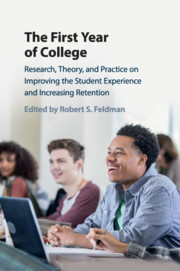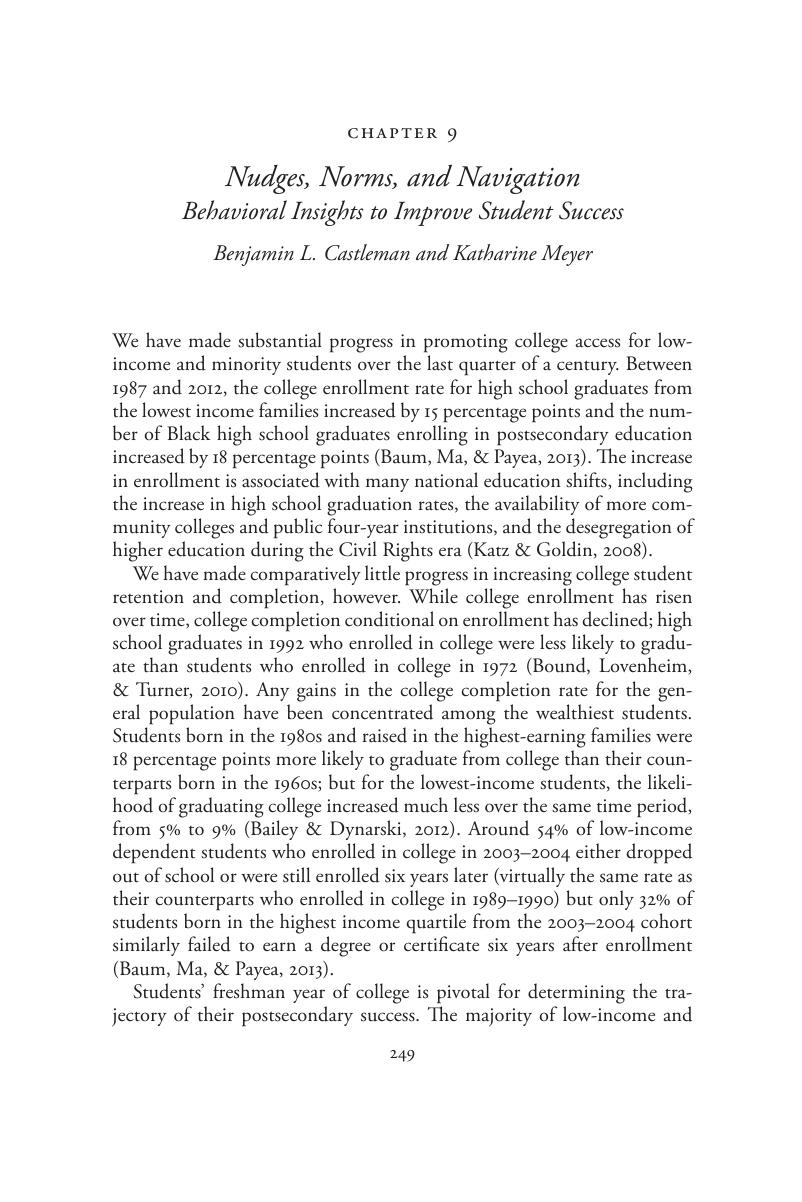 The First Year of College
The First Year of College Book contents
- The First Year of College
- The First Year of College
- Copyright page
- Contents
- Figures
- Tables
- Contributors
- Preface
- Part I Societal and Demographic Factors Underlying First-Year Student Success
- Part II Practices that Foster Student Success
- Part III Attitude and Behavior Changes that Promote Student Success
- Chapter 9 Nudges, Norms, and Navigation
- Chapter 10 Promoting Mindset Change and Student Success
- Chapter 11 Stereotype Threat and Stereotype Inoculation for Underrepresented Students in the First Year of College
- Index
- References
Chapter 9 - Nudges, Norms, and Navigation
Behavioral Insights to Improve Student Success
from Part III - Attitude and Behavior Changes that Promote Student Success
Published online by Cambridge University Press: 21 December 2017
- The First Year of College
- The First Year of College
- Copyright page
- Contents
- Figures
- Tables
- Contributors
- Preface
- Part I Societal and Demographic Factors Underlying First-Year Student Success
- Part II Practices that Foster Student Success
- Part III Attitude and Behavior Changes that Promote Student Success
- Chapter 9 Nudges, Norms, and Navigation
- Chapter 10 Promoting Mindset Change and Student Success
- Chapter 11 Stereotype Threat and Stereotype Inoculation for Underrepresented Students in the First Year of College
- Index
- References
Summary

- Type
- Chapter
- Information
- The First Year of CollegeResearch, Theory, and Practice on Improving the Student Experience and Increasing Retention, pp. 249 - 276Publisher: Cambridge University PressPrint publication year: 2017
References
- 2
- Cited by


